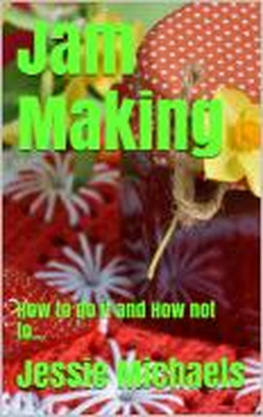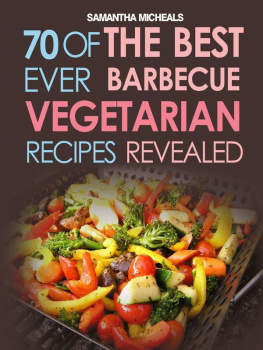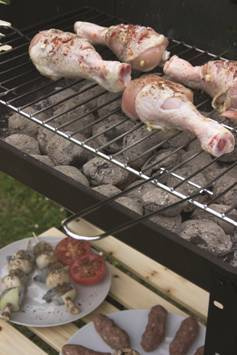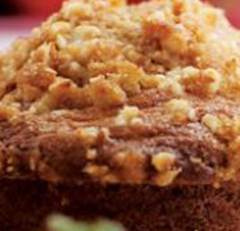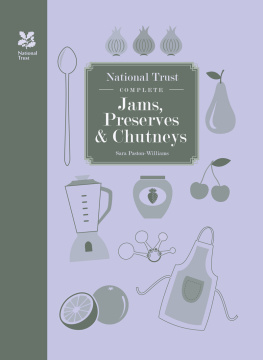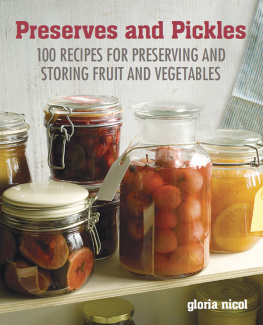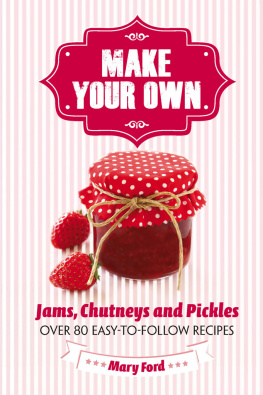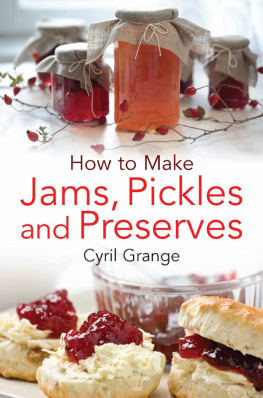Michaels - Jam Making
Here you can read online Michaels - Jam Making full text of the book (entire story) in english for free. Download pdf and epub, get meaning, cover and reviews about this ebook. City: Oklahoma City, year: 2017, publisher: Wild Jam Press, genre: Home and family. Description of the work, (preface) as well as reviews are available. Best literature library LitArk.com created for fans of good reading and offers a wide selection of genres:
Romance novel
Science fiction
Adventure
Detective
Science
History
Home and family
Prose
Art
Politics
Computer
Non-fiction
Religion
Business
Children
Humor
Choose a favorite category and find really read worthwhile books. Enjoy immersion in the world of imagination, feel the emotions of the characters or learn something new for yourself, make an fascinating discovery.
- Book:Jam Making
- Author:
- Publisher:Wild Jam Press
- Genre:
- Year:2017
- City:Oklahoma City
- Rating:4 / 5
- Favourites:Add to favourites
- Your mark:
- 80
- 1
- 2
- 3
- 4
- 5
Jam Making: summary, description and annotation
We offer to read an annotation, description, summary or preface (depends on what the author of the book "Jam Making" wrote himself). If you haven't found the necessary information about the book — write in the comments, we will try to find it.
Michaels: author's other books
Who wrote Jam Making? Find out the surname, the name of the author of the book and a list of all author's works by series.
Jam Making — read online for free the complete book (whole text) full work
Below is the text of the book, divided by pages. System saving the place of the last page read, allows you to conveniently read the book "Jam Making" online for free, without having to search again every time where you left off. Put a bookmark, and you can go to the page where you finished reading at any time.
Font size:
Interval:
Bookmark:
Jam Making
How to do it and How not to...

By Jessie Michaels
First Edition February 2017
Published by Wild Jam Press
017 Jessie Michaels
T his book is copyright. Apart from any fair dealing for the purpose of private study, research, criticism or review, as permitted under the Copyright Act, no part may be reproduced by any process without written permission. Enquiries should be addressed to the Publishers.
All rights reserved.
There are some simple rules that must be observed for successful jam making.
All ingredients must be of the best quality.
Fruit must be fresh picked, sound and rather under ripe than over ripe.
The sugar used should be good quality.
All jars and bottles must be sterilised.
Take every care that there is no suspicion of dampness in the jars or bottles when the jam is put into them, or it will ferment.
Place all glass containers on a well damped cloth before pouring the hot jam into them, and there will then be no accidents with bursting bottles.
The mistakes usually made be beginners are the use of inferior ingredients, the too lavish use of sugar and water and over boiling.
Very few fruits, indeed, only the richly gelatinous oranges, lemons or gooseberries need much water, and the pulpy varieties need only a cupful in the bottom of the pan to avoid burning accidents while they are being reduced to semi-liquids.
Then only the sourest of fruits require pound for pound of sugar.
Practically all stone fruits are quite sweet enough for the sweetest palate with three-quarters of sugar to the pound of fruit; and over-boiling changes a delicious jam into a sticky, candied, insipid and ugly mass.
The colour of the jam has to be considered as well as the consistency and the flavour.
The consistency should be just right when the colour is at its best.
Boil jams hard; do not stew them.
Test them as soon as they give the appearance of thickening.
The experienced jam maker can tell from the change of sound in the boiling mass that cooking is nearing completion.
A little careful listening as well as watching will soon convince the jam maker of this truth, and she will have an unfailing indication of the approach of the end.
Jam darkens somewhat as it cools and is kept, so that must be taken into consideration.
It also thickens considerably, so the amateur need not fear the newly-made jam is too thin if it is not quite as thick as last years.
Absolute cleanliness of everything used in jam making is essential.
If a boiling of jam has caught to the pan and the pan has been burned, there is always a great risk of the burn recurring.
So every precaution must be taken in cleaning such a pan, and the burned spot must be liberally rubbed with butter before new fruit is put in.
As soon as the jam is bottled, pour a kettleful of boiling water into the preserving pan and allow it to soak awhile.
The pan will then, be cleansed like magic without the addition of any soap or powder.
If cold water is put into the pan, the jam solidifies and there is endless work in getting rid of the remains.
Intelligent study of these fundamental rules will make home jam making a real pleasure and the results must be good.
Apricot Jam
Get sound clean, fresh apricots, and cut it open, taking out the nuts.
Weigh the stoned fruit, and then place it in the preserving pan, which has been well rubbed on the bottom with butter.
Pour a little water, a cupful or two, I the pan before putting the fruit in it.
Then place it on the stove to boil.
When the fruit has begun to boil, add three quarters of a pound of sugar to each pound of fruit.
Add the sugar gradually so that the fruit will not be too much cooled.
As soon as the jam reaches boiling point again boil it for from twenty to thirty minutes, but remove it from the stove before it begins to darken.
Bottle at once.

Plum Jam
The Japanese blood plum makes a most delicious jam; so does the big Orleans plum, and both the yellow and greengage are appreciated by fastidious people.
These jams are very easily made.
It is not necessary to stone them before placing them on the stove to boil, unless exception is made of the big Japanese plum.
The smaller varieties can be very easily rid of stones by watching the jam as it boils and removing the stones as they rise to the surface.
For all these plums three-quarters of a pound of sugar to each pound of fruit is sufficient and they need to be boiled about half an hour before the sugar is added, and the same time after they reach boiling point again.
The ordinary dark blue plum can be used with great advantage by making a supply of plum sauce, and this is an excellent recipe:
Take 6 pounds of dark plums, 3 pounds of brown sugar, 2 pints vinegar, 6 tablespoonfuls salt, a handful of whole ginger, 1 teaspoonful cayenne pepper, half an ounce whole pepper, half an ounce cloves, half an ounce of allspice.
Put all the ingredients together into the preserving pan, and boil until the stones of the plums separate from the fruit.
Then strain through a colander and bottle when cold.
This makes a delicious accompaniment to cold or grilled meat.
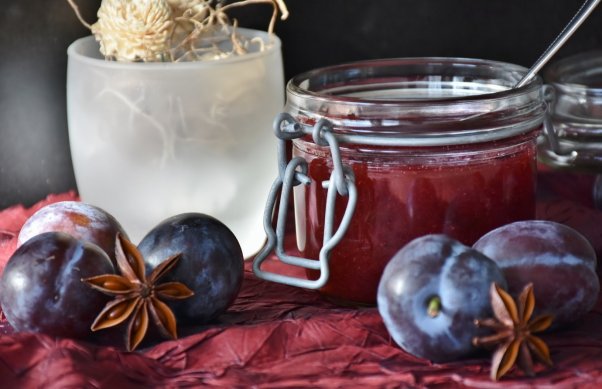
Pear Ginger Jam
Pear ginger is a favourite form of preserving pears, and it can be made with 8 pounds pears, 6 pounds of sugar, juice and rind of 6 lemons, 2 quarts of water, half a pound preserved ginger.
Peel, core and cut the pears into dices.
Place cores, skins and sugar and water on the boil, and boil for about a quarter of an hour.
Strain, return the syrup to the pan, add the pears, cut into tiny pieces, the chopped ginger, the grated rind of lemons, and their juice.
Simmer till clear, which will take about 1 and a half to 2 hours.

Quince Honey Jam
A delicious preserve is quince honey, for which is required 8 to 12 large quinces, with 2 and a half pounds of sugar and 1 and a quarter cup of water to each four quinces.
A few cloves tied in a muslin bag and placed in the preserving pan with the fruit gives a pleasing flavour to the preserve.
Grate the quinces and put them into the boiling syrup made with the sugar and water this should be boiled for five minutes and carefully skimmed of all froth as it rises.
Boil the quinces for 25 minutes, bottle and seal while hot.

Fig Jam
To make an unusually good fig conserve take six lemons and cut them up the day before the jam is to be made.
Soak them in three pints of water, after cutting them up finely as for marmalade.
Leave them soak in for 24 hours.
Then place the lemons and water in the preserving pan, bring them to boil, and add 12 pounds of figs, cut up, but not peeled, 1 pound of preserved ginger (cut small), and when the figs are tender add 10 pounds sugar.
Boil till the syrup shows signs of acting when some is put on a saucer.
Next pageFont size:
Interval:
Bookmark:
Similar books «Jam Making»
Look at similar books to Jam Making. We have selected literature similar in name and meaning in the hope of providing readers with more options to find new, interesting, not yet read works.
Discussion, reviews of the book Jam Making and just readers' own opinions. Leave your comments, write what you think about the work, its meaning or the main characters. Specify what exactly you liked and what you didn't like, and why you think so.

